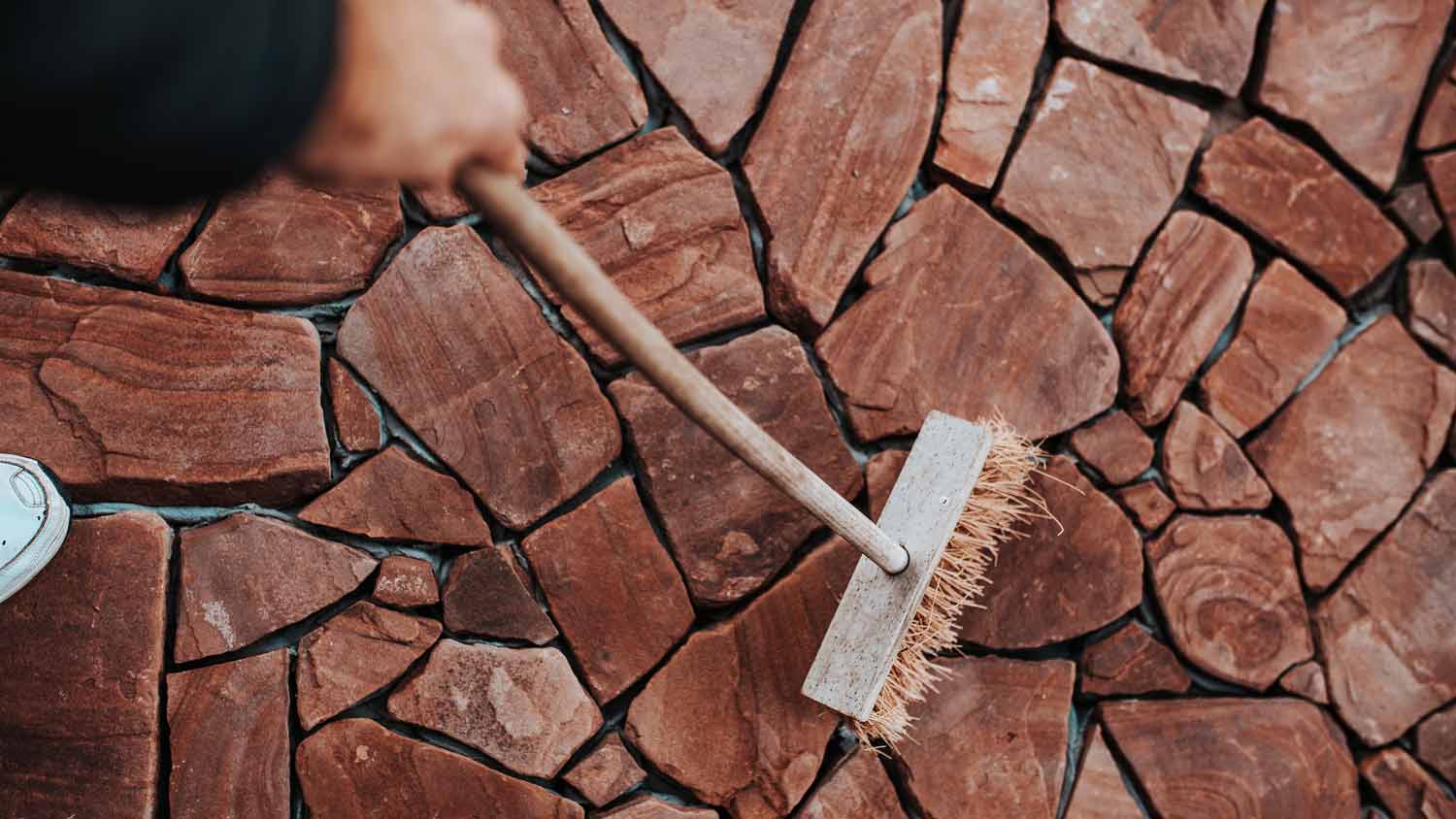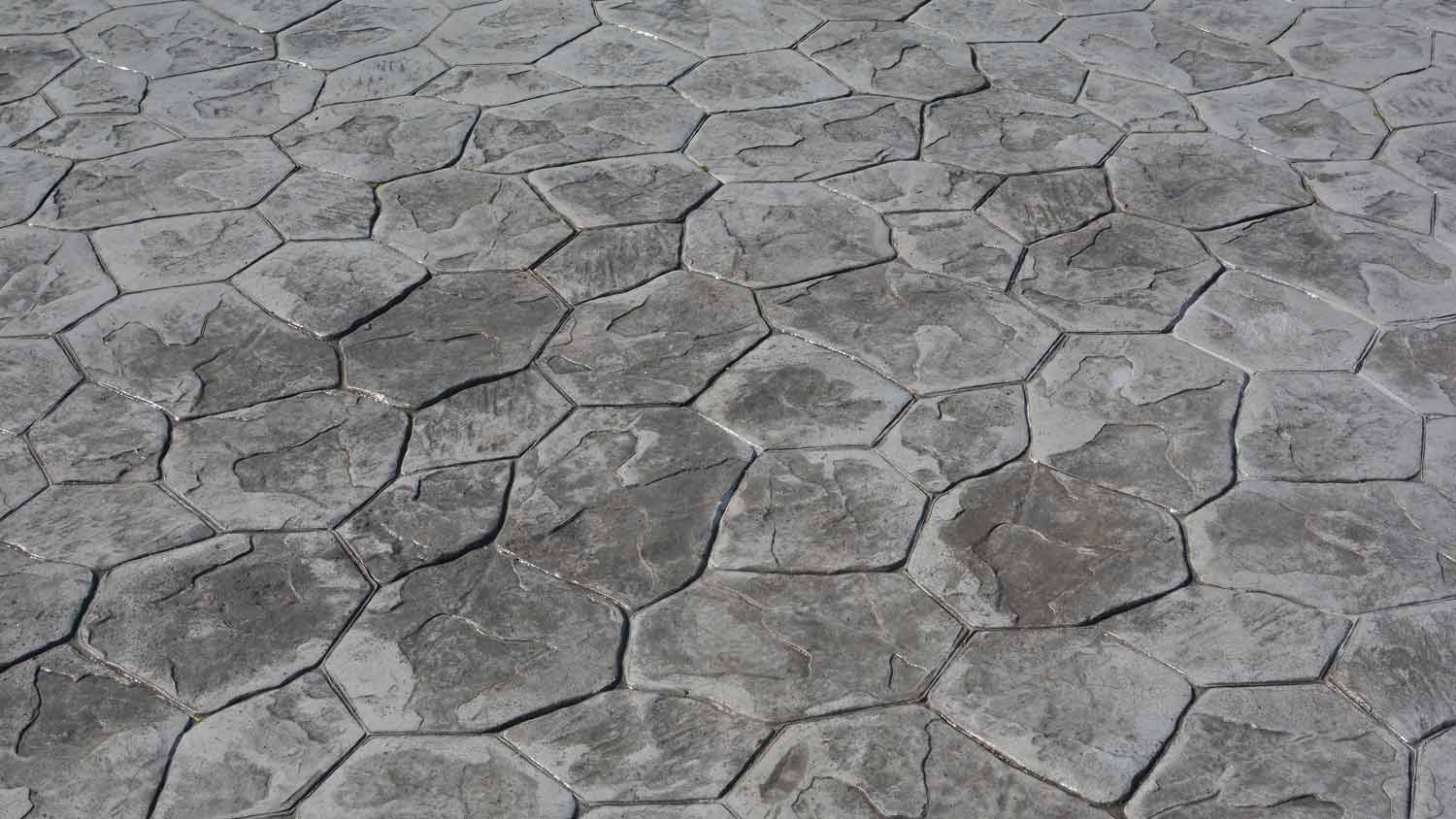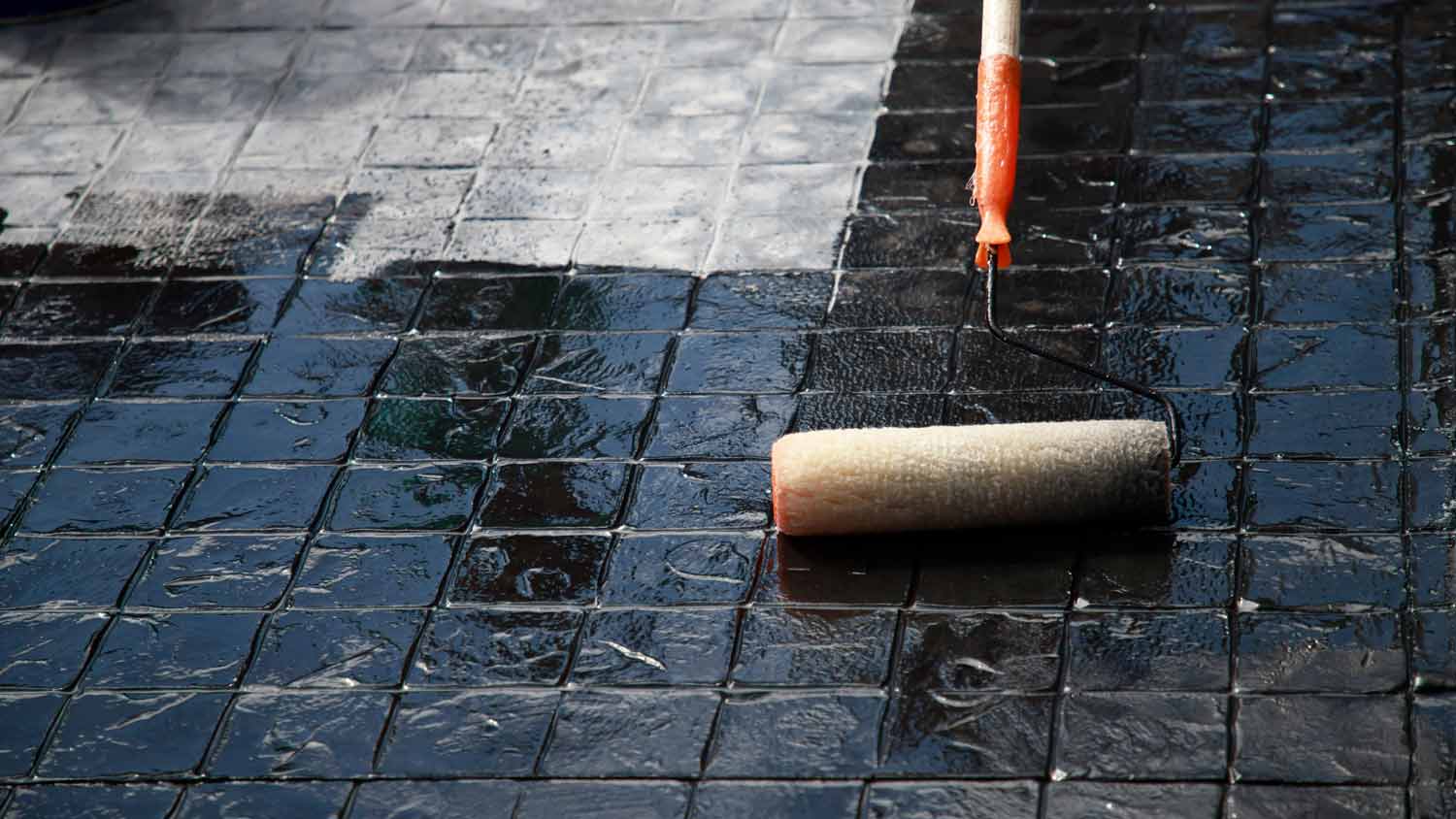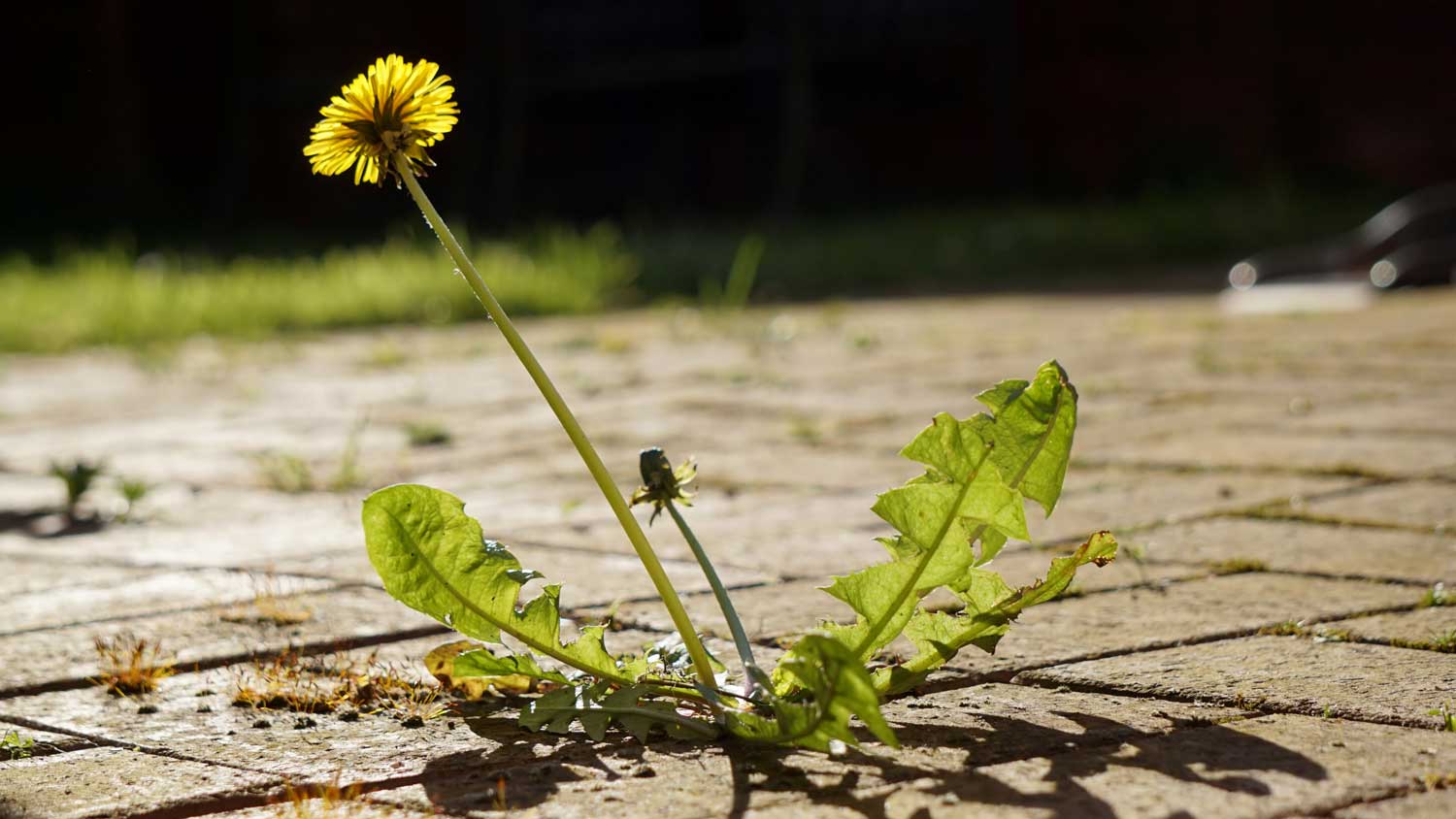7 Stamped Concrete Maintenance Tips
Make sure your stamped concrete care gets the stamp of approval


While there are plenty of perks of stamped concrete, maintaining its strength and style can be a bit trickier than usual. Stamped concrete maintenance requires a gentle hand, as its design can be more prone to damage than standard concrete slabs. Whether this popular floor style is showcased on your driveway, patio, or kitchen floor, here are the stamped concrete maintenance tips to keep it strong for decades.
What Should I Use to Clean Stamped Concrete?
| YesGentle dish detergent | NoHarsh chemicals |
|---|---|
| Laundry detergent | Undiluted vinegar |
| Approved degreasers | High power wash setting |
| Gentle power wash setting |
1. Sweep Up Debris

Once a week, remove grit, dirt, and debris from your stamped concrete to avoid scratches, chips, and stains. Concrete is a highly durable material, but sharp grit can slowly break down its seal and appearance. Use a wide, gentle-bristled broom to sweep away grit at least once a week and even more often for high-traffic spaces. You can also clean concrete floors with a vacuum—just switch off the beater bar to avoid scratches.
Keep your concrete clean to extend its longevity. Remove weeds, dirt, and other debris with a hose. Avoid using harsh chemicals when cleaning, as it can degrade your concrete.
2. Opt for a Gentle Wash
Avoid harsh chemicals when you clean concrete. They can break down the seal, stain, or even structure of your concrete. The same rule applies to cleaning stamped concrete, if not more so. Even vinegar can be too harsh on the seals used for stamped designs. Opt for a gentle dish soap and warm water mixture.
A note on power washing: while power washing is not ideal for stamped concrete, you can use it when necessary on a very low setting. Always test a small area before proceeding.
3. Address Stains ASAP

There's nothing more frustrating than a stamped concrete stain. Unlike paver patios, you cannot simply swap out the affected area. Each type of concrete stain will require a slightly different approach. Remove rust from concrete with a dish detergent solution and a stiff-bristled brush. Cleaning other common driveway stains may require laundry detergent, baking soda, or absorbent materials such as kitty litter.
4. Patch Cracks
It's hard, if not impossible, to avoid all concrete cracks over its lifetime. Keep crack patches at the top of your stamped concrete maintenance checklist, particularly when the crack is thicker than 3/8 of an inch.
In most cases, a simple concrete crack filler will do the trick, but it can be challenging to maintain the pattern of your stamped concrete in the process. For larger cracks, always call a local stamped concrete company to assist with the patch.
5. Add a New Seal

Add a new seal to your stamped concrete every two to three years. Not only can this protect its design and stain, but it will also protect the surface from scratches and cracks. Sealing concrete yourself is a relatively simple DIY, but it can take time, particularly because you’ll need to deep clean the concrete beforehand. If you hire a stamped concrete professional for the job, the cost of sealing concrete averages about $1,500 or $1.50 per square foot.
6. Remove Snow Responsibly
Deicing salts can increase the freezing-thaw cycle and lead to more concrete damage, especially on newly cured concrete. Avoid salt deicers and stick with snow-melting alternatives whenever possible. Additionally, take care when removing snow with a metal shovel, and if you must use a snow blower, set the blades as high as possible to avoid scratching the surface.
7. Watch Out for Weeds

Grass, weeds, and their roots can notoriously widen cracks in your stamped concrete. It's crucial to pull weeds up quickly. Be sure to pull the weed up by gripping it as close to the roots as possible, and avoid harsh herbicide chemicals on your concrete surface.





- How to Clean Stamped Concrete So It Shines for Years to Come
- What to Know About Stamped Concrete, From Pros and Cons to Cost
- What’s the Difference Between Stamped Concrete and Pavers?
- 6 Stamped Concrete Designs for a Beautiful Finish
- Stamped Concrete Overlay: Everything You Should Know
- How to Clean Concrete Indoors and Outdoors
- 6 Concrete Maintenance Tips to Extend Its Longevity
- Can You Pour New Concrete Over Existing Concrete?
- 9 Types of Concrete Finish for Driveways, Patios, and Walkways
- 17 Types of Concrete and How They’re Used











